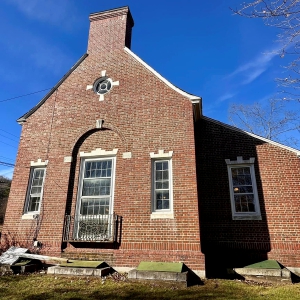Bow School District has grown 20% in a decade while almost everybody else has shrunk
| Published: 12-02-2023 4:44 PM |
As is well known, public school enrollment is slipping throughout New Hampshire and falling sharply in some places.
Somebody forgot to tell Bow and Dunbarton.
In the decade since much smaller Dunbarton joined Bow in a two-town school district, public school enrollment in that district has risen by 20%. Not only does this appear to be the biggest increase of any school district in New Hampshire over that time – a period in which statewide public school enrollment is down 11% – it’s a complete reversal from the rest of the Concord region.
Since 2014, for example, Franklin has seen its school enrollment fall a whopping 26%. Chichester is down 23% and its district, Pembroke, is down 9% overall. Merrimack Valley is down 15% and Concord almost 18%.
What is Bow’s secret? Good question.
It’s a little bit due to overall growth. Bow’s population has increased about 10% over that period while Concord’s has gone up only about 5%. But that doesn’t explain the huge enrollment disparity.
Duane Ford, the Bow School District’s long-time business administrator, thinks part of it is an accident of timing following the 2008 recession and subsequent freeze on the housing market. When the freeze finally thawed, Bow and Dunbarton, as well-off towns next to a desirable city, saw a big turnover of houses from older families to younger ones.
“Our theory – and this is only a theory – is there were a number of families who maybe had homes, the kids had graduated, gone away … and they tried to sell their homes then but it didn’t go well. Those properties have now all sold – they moved very fast in the last few years,” he said.
Article continues after...
Yesterday's Most Read Articles
 ‘Would you raise your right hand?’ — Local veterans consider the meaning of Memorial Day
‘Would you raise your right hand?’ — Local veterans consider the meaning of Memorial Day
 Jesse Sullivan pleads guilty to second-degree murder of half-brother, Zackary
Jesse Sullivan pleads guilty to second-degree murder of half-brother, Zackary
 ‘Bittersweet’: The Post on Main Street closes Friday
‘Bittersweet’: The Post on Main Street closes Friday
 Messy parking around Concord’s bus terminal won’t get less messy any time soon
Messy parking around Concord’s bus terminal won’t get less messy any time soon
 New Hampshire school phone ban could be among strictest in the country
New Hampshire school phone ban could be among strictest in the country
 ‘Something to chase’: Pascal Zabayo’s art fundraiser grows soccer from Concord to Kampala, Uganda
‘Something to chase’: Pascal Zabayo’s art fundraiser grows soccer from Concord to Kampala, Uganda
Supporting evidence exists. For one, he said, Bow’s enrollment slipped during the housing crisis, an indication of the effect of post-graduation families staying put.
And since then, babies are arriving: “The last five years we’ve seen the resident birth rate be 70 or greater. It used to be in the 40s.”
The result is seen in elementary enrollment, a clearer indication of what’s happening because unlike middle and high school, it doesn’t mix the two towns. In 2015, after Bow started all-day kindergarten, its elementary enrollment was 431. This year it’s 529, an increase of 20%.
The problem with this argument is that it also applies to towns that saw enrollment fall; their housing market also froze and then opened up.
Which leads to the conclusion that Bow is reaping the result of past reputation. Once you’re known as a place with a “good school system,” families are more likely to move there.
“Once you build something and you can sustain it, I think it’s very attractive to people with kids who want to live in those communities,” said Ford. “I’m not objective, but I think we have a really, really good school district for all kinds of students. … We’ve been very well supported by the community.”
A bit of supporting evidence comes from Hopkinton, the other town in Concord’s orbit that is known for being relatively well-off, usually a measure of the quality of its public schools.
Hopkinton is the only other Concord-area school district where enrollment rose over the past decade, although by a modest 5%.
The message for communities who fear their schools will empty and are trying to reverse the trend appears to be two-fold: Improve your school system, but also make sure everybody knows about it.
If you see superintendents start to hire social media influencers, you’ll know why.







 Senate lawmakers vote to lift betting limits to attract high-rollers to New Hampshire’s casinos
Senate lawmakers vote to lift betting limits to attract high-rollers to New Hampshire’s casinos In echo of 2014 struggle, Market Basket board sidelines ‘Artie T.’ from CEO spot
In echo of 2014 struggle, Market Basket board sidelines ‘Artie T.’ from CEO spot Historic former Boscawen library building on sale – again
Historic former Boscawen library building on sale – again
